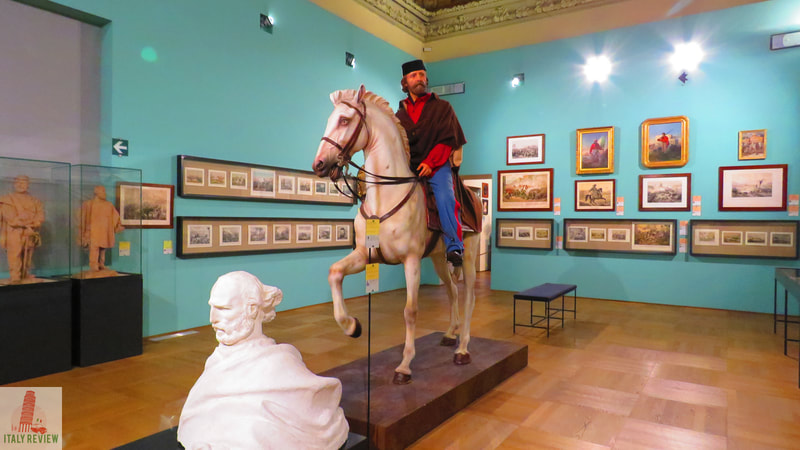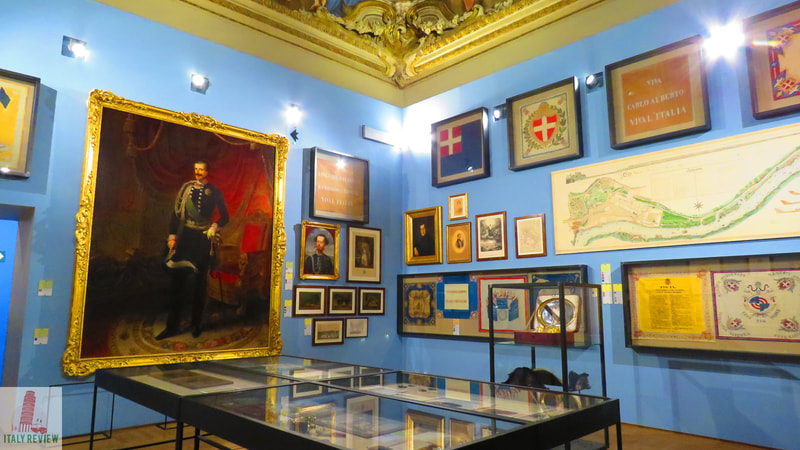National Museum of the Risorgimento
|
By Dion Protani
|
Latest update: 17 January 2024
|
|
The National Museum of the Risorgimento or Museo Nazionale del Risorgimento charts the beguiling story by which Italy became a unified nation in 1861, the process known as the Risorgimento.
One of 23 museums in Italy dedicated to the same subject, the one in Turin is the most important. It has some fascinating displays including a statue of Risorgimento hero Giuseppe Garibaldi. |
Related links
Profile
The National Museum of the Risorgimento (Museo Nazionale del Risorgimento) is an important historical museum located in Turin, Italy. It is dedicated to the history of the Risorgimento, the period of Italian unification and the struggle for independence that took place during the 19th century.
The museum is housed in the Palazzo Carignano, a grand historic building in the heart of Turin. The Palazzo Carignano itself has historical significance as it was the birthplace of Vittorio Emanuele II, the first king of unified Italy. The architecture of the building is notable for its elegant Baroque style.
The National Museum of the Risorgimento houses an extensive collection of artifacts, documents, and memorabilia from the period of Italian unification. The exhibits cover various aspects of the Risorgimento, including political events, military campaigns, social movements, and the contributions of key figures such as Giuseppe Garibaldi and Count Camillo di Cavour.
Visitors can explore a series of themed rooms and galleries, each representing different phases and milestones of the Risorgimento. The museum's collection includes historical documents, paintings, sculptures, weapons, uniforms, and personal belongings of prominent figures.
The museum is housed in the Palazzo Carignano, a grand historic building in the heart of Turin. The Palazzo Carignano itself has historical significance as it was the birthplace of Vittorio Emanuele II, the first king of unified Italy. The architecture of the building is notable for its elegant Baroque style.
The National Museum of the Risorgimento houses an extensive collection of artifacts, documents, and memorabilia from the period of Italian unification. The exhibits cover various aspects of the Risorgimento, including political events, military campaigns, social movements, and the contributions of key figures such as Giuseppe Garibaldi and Count Camillo di Cavour.
Visitors can explore a series of themed rooms and galleries, each representing different phases and milestones of the Risorgimento. The museum's collection includes historical documents, paintings, sculptures, weapons, uniforms, and personal belongings of prominent figures.
History
The idea for the National Museum of the Risorgimento originated in the late 19th century, and it was officially established in 1878. The museum was founded to celebrate and commemorate the achievements of the Risorgimento and to promote national unity and identity among the Italian people.
Over the years, the museum's collection has grown significantly through donations and acquisitions, becoming a comprehensive repository of artifacts and historical records related to the Italian unification movement.
Over the years, the museum's collection has grown significantly through donations and acquisitions, becoming a comprehensive repository of artifacts and historical records related to the Italian unification movement.
Key features
- Opening Hours: The museum is generally open to the public, but opening hours may vary depending on the season. It's advisable to check the official website or local guides for the most up-to-date information.
- Entrance Fee: There is an entrance fee to access the museum. Different ticket options are available for adults, children, and students.
- Guided Tours: Guided tours may be available for visitors who want a more in-depth understanding of the exhibits and the history of the Risorgimento.
- Accessibility: The museum is usually accessible to visitors with reduced mobility.
- Audio Guides: Audio guides may be available in multiple languages, providing additional context and information about the exhibits.
|
Opening-times:
Tuesday- Sunday: 10:00 - 18:00 Last entrance: 17:30 Closed: Mondays |
Prices:
Full: €10 Concessions: €8 (over 65's, groups of 25+) Children under 6: Free entrance |
Museo Nazionale del Risorgimento Italiano - Torino
|
City: Turin
Province: Metropolitan City of Turin Region: Piedmont Opened: 1878 Exhibits: Italian unification weapons, regalia and other artefacts Nearest Metro: Porta Nuova (900 metres/11 minutes' walk) Close by: Egyptian Museum of Turin, Royal Palace of Turin Recommended accommodation: Turin Palace Hotel |























